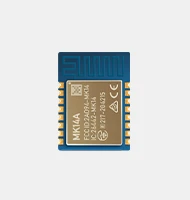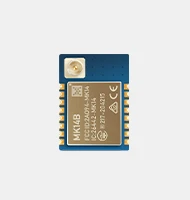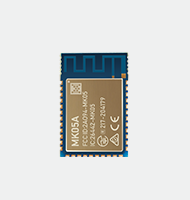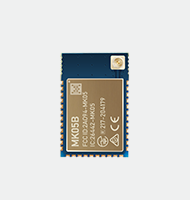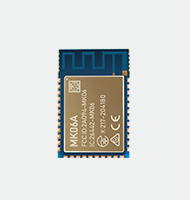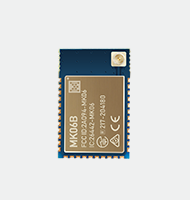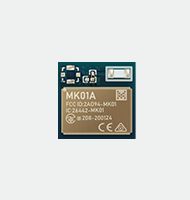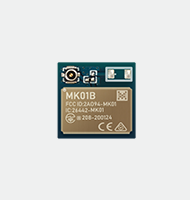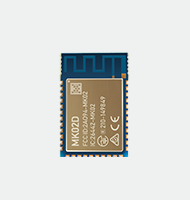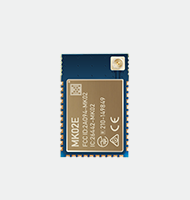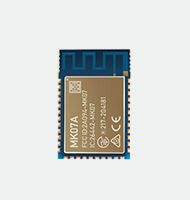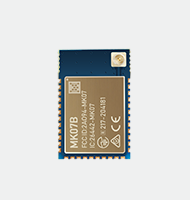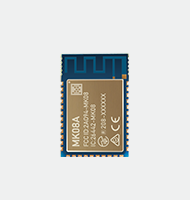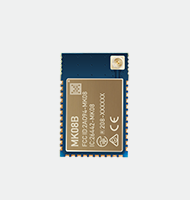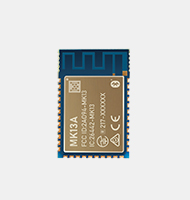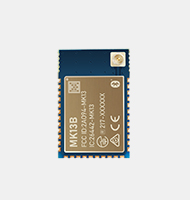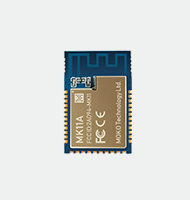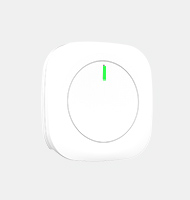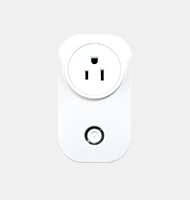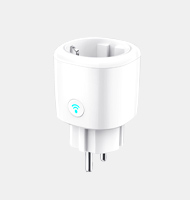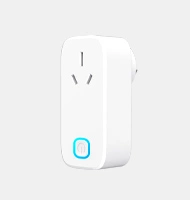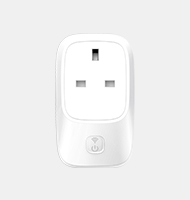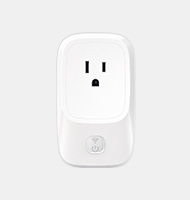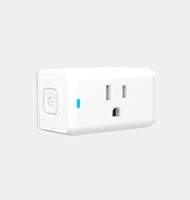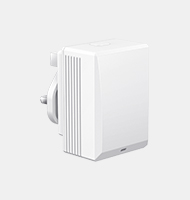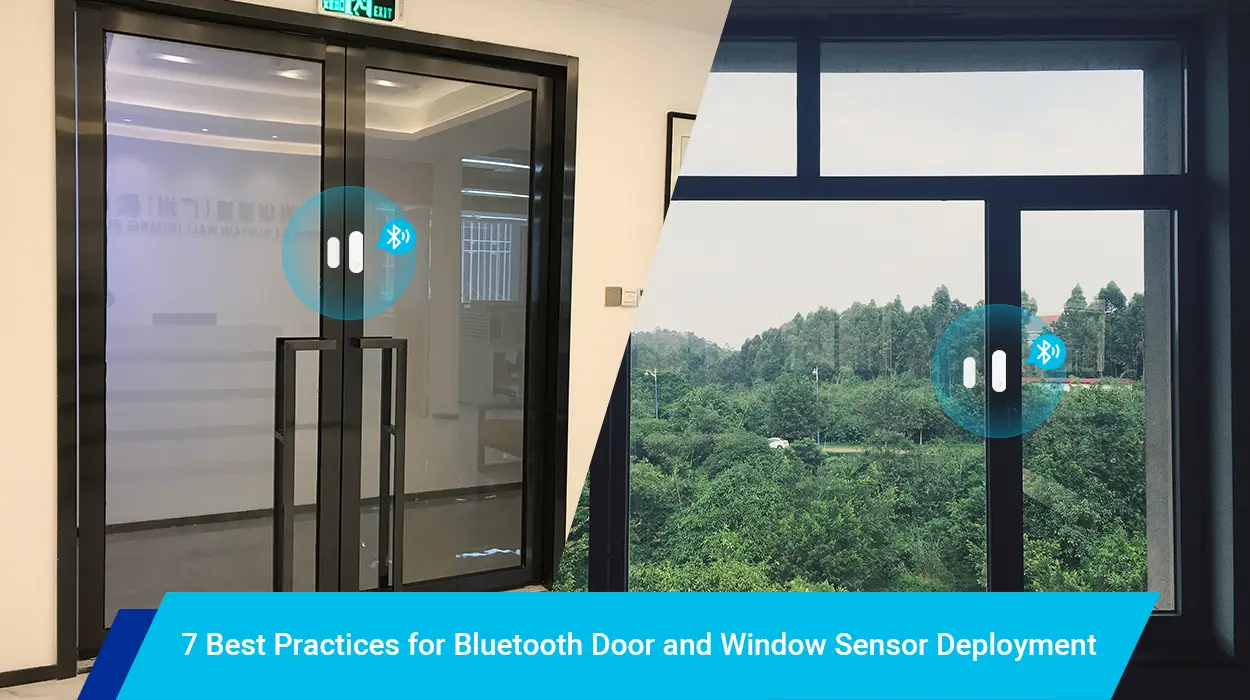ادخل إلى عالم مبهج لمشهدنا التكنولوجي سريع التقدم, حيث ظهرت مجموعة من تقنيات الاتصالات اللاسلكية إلى الحياة, تلبية التطبيقات المتنوعة. في عالم إنترنت الأشياء (إنترنت الأشياء), ثلاث تقنيات متميزة —BLE, تتفاعل, وUWB — ظهرت كأدوات متعددة الاستخدامات. ستقدم هذه المدونة نظرة عامة على هذه التقنيات الثلاثة, ناقش الاختلافات الرئيسية بين BLE وRFID وUWB, استكشاف حالات الاستخدام المختلفة الخاصة بهم, والمساعدة في النهاية في تحديد أي منها قد يكون أكثر ملاءمة لتطبيقات معينة.
نظرة عامة على بليه, RFID وUWB
قبل الخوض في الاختلافات بين BLE وRFID وUWB, دعونا نلقي نظرة على كل من التقنيات اللاسلكية الثلاث وكيفية عملها.
ما هو بليه
بليه, اختصار لـ Bluetooth منخفض الطاقة, هي تقنية اتصالات لاسلكية تم إنشاؤها خصيصًا للتفاعلات قصيرة المدى. تم تقديمه كجزء من تقنية البلوتوث 4.0 في 2011, مع التركيز بشكل أساسي على تحسين استخدام الطاقة.
على عكس البلوتوث التقليدي, لقد اكتسب BLE اعتماداً واسع النطاق في إنترنت الأشياء (إنترنت الأشياء) المجال بسبب طبيعتها الموفرة للطاقة. فهو يسهل نقل البيانات بسرعة مع تقليل استهلاك الطاقة, مما يجعله خيارًا مثاليًا للأجهزة التي تعمل بطاقة منخفضة. بالإضافة إلى ذلك, يعمل BLE ضمن نفس نطاقات موجات الراديو مثل Bluetooth ويتيح تبادل البيانات بين جهازين باستخدام طرق مماثلة.
ما هو رفيد
تتفاعل, والذي يرمز إلى تحديد الترددات الراديوية, هي تقنية تستخدم موجات الراديو لتحديد وتتبع الأشياء أو الأفراد لاسلكيًا. يتكون من مكونين رئيسيين: علامة وقارئ. يتم إرفاق علامات RFID بالأشياء, ويقرأ قارئ RFID الإشارات المرسلة من العلامات. تعمل تقنية RFID على نطاقات تردد مختلفة, اعتمادا على نوع العلامات المستخدمة.
عندما تدخل علامة RFID في نطاق موجات الراديو الخاصة بالقارئ, يتلقى الطاقة ويرسل معرفه الفريد. يلتقط القارئ هذه المعلومات ويعالجها, تمكين الشركات من أتمتة إدارة المخزون, تتبع الأصول, وتبسيط عمليات سلسلة التوريد.
ما هو UWB
UWB (النطاق العريض للغاية) هي تقنية اتصالات لاسلكية قصيرة المدى تستخدم موجات الراديو النبضية القصيرة لتحديد الموقع والمسافة بين الأشياء بدقة. عن طريق إرسال هذه النبضات عبر طيف ترددي واسع, يمكن للأجهزة التي تدعم تقنية UWB تحليل وقياس زمن الرحلة (ToF), تمكين معلومات الموقع الدقيقة.
مع طيف الترددات الواسع, يتيح UWB اتصالات النطاق الترددي العالي. إن إمكانات التعريب والتتبع الدقيقة التي تتميز بها تجعل UWB مناسبًا تمامًا لتطبيقات مثل تحديد المواقع الداخلية وتتبع الأصول.
بليه مقابل RFID مقابل UWB: مقارنة كل ميزة على حدة
بليه, تتفاعل, وUWB هما معياران متميزان للاتصالات اللاسلكية. دعونا نتفحص أوجه التشابه والاختلاف بينهما من أجل الحصول على فهم أفضل لهذه البروتوكولات.
نطاق التردد
يعمل BLE عادة في 2.4 نطاق جيجاهرتز, وهو نفس التردد الذي تستخدمه شبكة WiFi والعديد من الأجهزة اللاسلكية الأخرى. يمكن أن تعمل تقنية RFID في الترددات المنخفضة (125 – 134 كيلو هرتز), عالية التردد (13.56 ميغاهيرتز), أو فائقة التردد (860 – 956 ميغاهيرتز) العصابات اعتمادا على المنطقة والتطبيق. تعمل UWB بتردد واسع يتراوح من 3.1 جيجا هرتز إلى 10.6 غيغاهرتز.
نطاق الإرسال
تم تصميم BLE للاتصالات قصيرة المدى, تصل عادة إلى حوالي 100 متر. يمتد RFID على نطاقات مختلفة, ببضعة سنتيمترات إلى عدة أمتار بناءً على نطاق التردد المستخدم. تتفوق تقنية UWB في اكتشاف موقع الجهاز وتعمل بفعالية ضمن نطاق أقل من 200 متر, خاصة في مسافات أقصر تتراوح من 1 ل 50 متر.
معدل البيانات
تقدم بليه معدلات بيانات معتدلة تصل إلى حوالي 2 ميغابت في الثانية, تختلف معدلات بيانات RFID اعتمادًا على نطاق التردد حيث تتراوح أنظمة LF وHF عادةً من بضعة كيلوبت في الثانية إلى عشرات كيلوبت في الثانية, ويوفر UWB معدلات بيانات أعلى تصل إلى 1 جيجابت في الثانية.
دقة
يوفر BLE دقة محدودة في نطاق بضعة أمتار, تختلف دقة RFID اعتمادًا على نطاق التردد الذي يتراوح من بضعة سنتيمترات إلى بضعة أمتار, وتوفر UWB دقة عالية في نطاق يتراوح من بضعة سنتيمترات إلى بضعة أمتار, مما يجعلها مناسبة لتحديد الموقع بدقة.
طريقة التواصل
يستخدم BLE الاتصال ثنائي الاتجاه لتبادل البيانات, يتبع نظام RFID عادةً طريقة اتصال أحادية الاتجاه من العلامات إلى القراء, ويستخدم UWB اتصالاً ثنائي الاتجاه باستخدام نبضات قصيرة المدة لتحديد المواقع بدقة ونقل البيانات.
يكلف
يقدم BLE عمومًا حلاً فعالاً من حيث التكلفة نظرًا لاعتماده على نطاق واسع وتوافر الأجهزة بأسعار معقولة. تختلف تكاليف RFID اعتمادًا على نطاق التردد وتعقيد النظام. UWB, كونها تكنولوجيا أكثر تخصصا, قد تنطوي على تكاليف أولية أعلى اعتمادًا على متطلبات التطبيق.
| بليه | تتفاعل | UWB | |
| معيار | IEEE 802.15.1 | إسو/إيك/إيي 21451-7:2011 | IEEE 802.15.4 (802.15.4أ/802.15.4z) |
| تكرار | 2.400 ل 2.480 غيغاهرتز | نطاقات جيجا هرتز الفرعية. LF (125 – 134 كيلوهرتز), التردد العالي (13.56 ميغاهيرتز) و UHF (860 – 956 ميغاهيرتز) | 3.1 جيجا هرتز إلى 10.6 غيغاهرتز |
| النطاق/التغطية | يصل إلى 100 متر | 1 – 5م | يصل إلى 200 متر |
| معدل البيانات | يصل إلى 2 ميغابت في الثانية | بضعة كيلوبت في الثانية إلى عشرات كيلوبت في الثانية | يصل إلى 1 جيجابت في الثانية |
| دقة | في عدة أمتار | بالسنتيمتر إلى 1 متر | بالسنتيمتر |
| الاتصالات الاتجاهية | اتجاهين | طريقة واحدة | اتجاهين |
| بنية تحتية, تكلفة العلامة والصيانة | قليل | قليل | عالي |
إيجابيات وسلبيات بليه, تتفاعل, وUWB لتتبع الأصول
تؤدي السمات المميزة لـ BLE و RFID و UWB إلى ظهور المزايا والقيود الخاصة بكل منهما. فيما يلي نظرة عامة على نقاط القوة والقيود الرئيسية لكل تقنية:

مزايا وقيود بليه (بلوتوث منخفض الطاقة)
- مزايا بليه
انخفاض استهلاك الطاقة: تم تصميم BLE ليكون موفرًا للطاقة, تمكين الأجهزة من العمل على البطاريات الصغيرة لفترات طويلة من الزمن.
توافق واسع: ويدعم بليه من قبل مجموعة واسعة من الأجهزة, ضمان الاتصال والتواصل السلس.
تنفيذ بسيط وفعال من حيث التكلفة: BLE سهل التنفيذ ويتطلب الحد الأدنى من الأجهزة, مما يجعلها حلاً فعالاً من حيث التكلفة.
نقل سريع للبيانات: يدعم BLE معدلات نقل البيانات السريعة, تمكين الاتصال في الوقت الحقيقي والتحديثات السريعة.
- حدود بليه
نطاق محدود: يتمتع BLE بنطاق اتصال أقصر مقارنة بالتقنيات اللاسلكية الأخرى.
انخفاض القدرة على نقل البيانات: BLE غير مناسب للتطبيقات التي تتطلب إنتاجية عالية للبيانات أو عمليات نقل ملفات كبيرة.
التدخل من الأجهزة الأخرى: يمكن أن تتأثر اتصالات BLE بالتداخل من الأجهزة التي تعمل على نفس التردد.
مزايا وقيود RFID (تحديد تردد الراديو)
- مزايا رفيد
عملية تماس: تتيح تقنية RFID التعرف والتتبع بدون تلامس, مما يلغي الحاجة إلى الاتصال الجسدي أو المسح الضوئي لخط البصر.
التقاط البيانات بسرعة وآلية: يتيح RFID التقاط البيانات بسرعة وآلية, تسهيل تحديد الهوية والتتبع بسرعة عالية.
المتانة وإمكانية إعادة الاستخدام: غالبًا ما تكون علامات RFID متينة ويمكن إعادة استخدامها عدة مرات, تقليل تكاليف الملكية الإجمالية.
مجموعة واسعة من التطبيقات: تجد تقنية RFID تطبيقات في صناعات متنوعة, مثل البيع بالتجزئة, الخدمات اللوجستية, والرعاية الصحية.
- حدود RFID
نطاق قراءة محدود: أنظمة RFID لها نطاق قراءة مقيد, مما يحد من قابليتها للاستخدام للقراءة لمسافات طويلة.
التدخل وانعكاس الإشارة: يمكن أن تتأثر إشارات RFID بالتداخل والانعكاس الناتج عن الأجهزة أو المواد الأخرى.
ارتفاع تكاليف التنفيذ: يمكن أن تكون تكاليف التنفيذ الأولية لأنظمة RFID أعلى مقارنة بتقنيات تحديد الهوية الأخرى.
مخاوف تتعلق بالأمن والخصوصية: قد تشكل أنظمة RFID مخاطر أمنية, تتطلب تدابير مثل التشفير والتحكم في الوصول.
مزايا وقيود UWB (النطاق العريض للغاية)
- مزايا UWB
معدلات نقل بيانات عالية: يتيح UWB الاتصال اللاسلكي السريع والفعال, دعم تدفق الوسائط المتعددة وأنظمة تحديد المواقع في الوقت الحقيقي.
النطاق الدقيق والتوطين: يوفر UWB إمكانيات تحديد النطاق والتعريب بدقة, تسهيل تحديد المواقع الدقيقة للأشياء وتتبعها.
انخفاض استهلاك الطاقة: تستهلك أجهزة UWB طاقة منخفضة نسبيًا, مما يؤدي إلى عمر أطول للبطارية وزيادة الكفاءة التشغيلية.
مقاومة التدخل: UWB أقل عرضة للتداخل, مما يؤدي إلى اتصالات أكثر موثوقية وقوة.
- حدود UWB
نطاق أقصر: إشارات UWB لها نطاق محدود, مما يجعلها أقل ملاءمة للتطبيقات طويلة المدى.
القيود التنظيمية: تخضع تقنية UWB لقيود تنظيمية في بعض المناطق, مما يؤثر على اعتماده وتنفيذه.
التنفيذ المعقد: قد يتطلب تنفيذ تقنية UWB تكاملًا معقدًا لمكونات الأجهزة والبرامج.
اعتماد محدود في السوق: تتمتع تقنية UWB باعتماد محدود في السوق مقارنة بالتقنيات اللاسلكية الأخرى, مما يؤدي إلى نظام بيئي أصغر من الأجهزة والحلول المتوافقة.
حالات الاستخدام المختلفة لـ BLE, تتفاعل, و UWB
منذ بليه, تتفاعل, وUWB تأتي بمزايا وقدرات مختلفة, لقد ولدوا لحالات استخدام مختلفة. سيوضح لك ما يلي بعض حالات الاستخدام الأكثر شيوعًا لكل تقنية.
تطبيقات البلوتوث منخفضة الطاقة (بليه)
يتم استخدام BLE بشكل شائع في التطبيقات المختلفة التي تتطلب اتصالاً لاسلكيًا قصير المدى مع استهلاك منخفض للطاقة.
- الأجهزة القابلة للارتداء: يستخدم BLE على نطاق واسع في أجهزة تتبع اللياقة البدنية, الساعات الذكية, وغيرها من الأجهزة القابلة للارتداء للاتصال بالهواتف الذكية ونقل البيانات مثل معدل ضربات القلب, الخطوات المتخذة, والإخطارات.
- أتمتة المنزل: مع بليه, الأجهزة المنزلية الذكية مثل منظمات الحرارة, أنظمة الإضاءة, ويمكن لأقفال الأبواب إنشاء اتصال فيما بينها ويمكن التحكم فيها بسهولة من خلال محور مركزي أو تطبيق على الهاتف الذكي.
- تتبع الأصول: تُستخدم إشارات BLE على نطاق واسع لتحديد المواقع الداخلية وتتبع الأصول. يمكن وضعها على أشياء ثمينة, في متاجر البيع بالتجزئة للتسويق القرب, أو في المستودعات لتتبع المخزون.
- مراقبة الصحة: يتم استخدام بليه في الأجهزة الطبية لمراقبة المرضى عن بعد, السماح لمتخصصي الرعاية الصحية بجمع وتحليل البيانات مثل مستويات الجلوكوز في الدم, ضغط الدم, ودرجة الحرارة.
تطبيقات RFID (تحديد تردد الراديو)
تحظى تقنية RFID بشعبية كبيرة في السيناريوهات التي تتطلب تحديدًا وتتبعًا سريعًا ودقيقًا.
- إدارة سلسلة التوريد: يتم إرفاق علامات RFID بالمنتجات, تمكين تتبع المخزون في الوقت الحقيقي, تحسين رؤية سلسلة التوريد, والحد من الأخطاء في مجال الخدمات اللوجستية وإدارة المخزون.
- التحكم في الوصول: تُستخدم بطاقات RFID أو سلاسل المفاتيح للتحكم الآمن في الوصول إلى المباني, مواقف السيارات, والمجتمعات المسورة. أنها توفر وسيلة فعالة للمصادقة ومنح حق الوصول للأفراد المصرح لهم.
- إدارة البيع بالتجزئة والمخزون: تتيح علامات RFID الموجودة على عناصر البيع بالتجزئة إدارة سريعة ودقيقة للمخزون, تقليل نفاد المخزون وتحسين تجربة التسوق من خلال تمكين عمليات الدفع بشكل أسرع وتقليل الحاجة إلى المسح اليدوي.
- تتبع الماشية: تُستخدم علامات الأذن أو غرسات RFID لتتبع ومراقبة الماشية, تمكين المزارعين من إدارة ومراقبة حيواناتهم’ صحة, موقع, ومعلومات التربية.
تطبيقات النطاق العريض للغاية (UWB)
تتيح تقنية UWB تحديد المواقع بدقة ونقل البيانات بسرعة عالية عبر مسافات قصيرة.
- أنظمة تحديد المواقع في الوقت الحقيقي (آر تي إل إس): يستخدم UWB لأنظمة تحديد المواقع في الأماكن المغلقة, تمكين التتبع الدقيق للأصول, الموظفين, والمركبات في بيئات مثل المستودعات, المستشفيات, ومرافق التصنيع.
- المدفوعات اللاتلامسية: يمكن لتقنية UWB تعزيز أنظمة الدفع عبر الهاتف المحمول الآمنة من خلال توفير الكشف الدقيق عن القرب والمصادقة, تمكين المعاملات السلسة دون اتصال جسدي.
- الواقع المعزز (AR): يمكن استخدام UWB في تطبيقات الواقع المعزز لتتبع موضع وحركة الأشياء أو الأشخاص بدقة في الوقت الفعلي, خلق تجارب غامرة وتفاعلية.
بليه مقابل. تتفاعل مقابل. UWB: وهو أفضل?
يعتمد تحديد التقنية الأفضل على المتطلبات المحددة لتطبيقك. النظر في عوامل مثل النطاق, معدل البيانات, يكلف, والبيئة التي سيتم فيها التتبع.
BLE مناسب تمامًا للطاقة المنخفضة, اتصال قصير المدى, مما يجعله اختيارًا ممتازًا للأجهزة الشخصية وتطبيقات المنزل الذكي. تتفوق تقنية RFID في سيناريوهات تتبع الأصول والتحكم في الوصول, توفير إدارة فعالة للمخزون ومصادقة الوصول الآمن. يوفر UWB تحديد المواقع بدقة عالية ونقل البيانات بسرعة عالية, مما يجعلها ذات قيمة للتطبيقات التي تتطلب تتبعًا دقيقًا للموقع واتصالًا سريعًا.
أسئلة وأجوبة حول بليه, تتفاعل, و UWB
س1: يمكن بليه, تتفاعل, وUWB يمكن استخدامها معًا?
من الممكن الجمع بين RFID وBLE للحصول على الحل الأمثل لتتبع كل من الأشخاص والأصول. يمكن أن يعمل UWB أيضًا جنبًا إلى جنب مع RFID إذا كانت هناك حاجة إلى بيانات موقع أكثر دقة.
Q2: هل هذه التقنيات آمنة؟?
جميع التقنيات الثلاث لديها تدابير أمنية لحماية البيانات, لكن RFID وBLE أكثر عرضة للثغرات الأمنية مثل الانتحال والتنصت من UWB.
س3: هل يمكن إعادة استخدام علامات RFID؟?
علامات RFID السلبية غير قابلة لإعادة الاستخدام بشكل عام, بينما يمكن إعادة استخدام علامات RFID النشطة عدة مرات.
س 4: كم تكلفة هذه العلامات?
علامات بليه تكلف عادة $10-35, تتراوح علامات RFID من $25-70 و اكثر, ويتم تسعير علامات UWB بشكل عام بين $50-100. يمكن أن تختلف الأسعار حسب الميزات والكميات المختلفة.
س5: ما هي التكنولوجيا الأفضل لـ RTLS؟?
تُفضل تقنية UWB عادةً في أنظمة تحديد المواقع في الوقت الفعلي (آر تي إل إس) لما تتمتع به من دقة ودقة عالية في التتبع وتحديد المواقع. لكن, تحظى تقنية BLE أيضًا بشعبية كبيرة بسبب استهلاكها المنخفض للطاقة وفعاليتها من حيث التكلفة. يعتمد القرار بين UWB وBLE على المتطلبات والتفضيلات المحددة لتطبيق RTLS.
